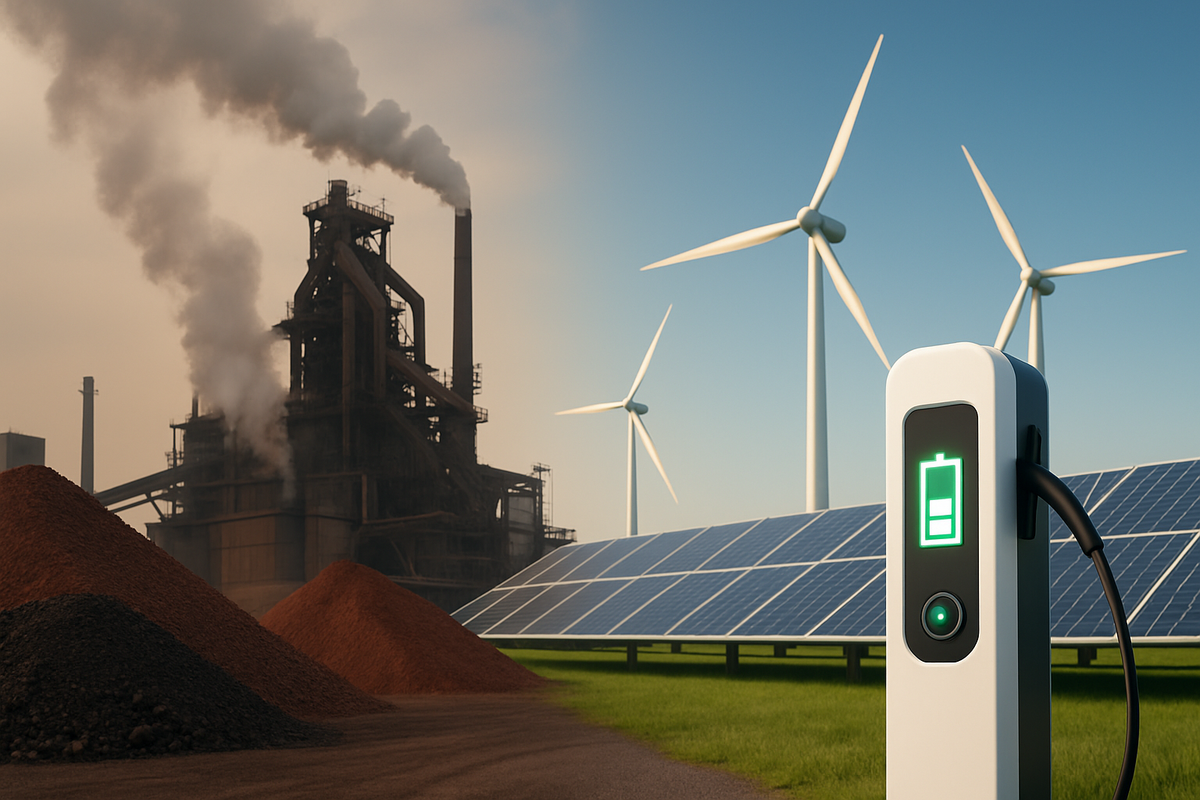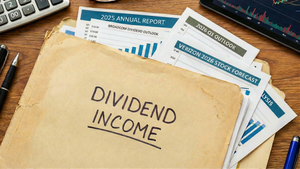
The global industrial metals market in October 2025 finds itself at a pivotal juncture, characterized by a stark divergence in fortunes. While the relentless march towards a green energy future is igniting unprecedented demand for critical minerals essential for electric vehicles (EVs) and renewable energy, traditional industrial metals grapple with macroeconomic uncertainties, persistent oversupply, and the escalating complexities of geopolitical trade relations. This bifurcated landscape promises both immense opportunities for strategic players and significant challenges for those unable to adapt to the shifting global economic and environmental paradigms.
Market Dynamics: A Complex Web of Demand, Supply, and Geopolitics
The pricing and supply of industrial metals are currently influenced by a multifaceted array of factors, creating a highly volatile yet strategically critical market. Global economic growth, particularly industrial activity in major consuming nations like China and India, remains a primary driver. However, this is increasingly overshadowed by the monumental demands of the energy transition, which requires vastly more mineral inputs than conventional energy systems. Supply, on the other hand, is constrained by declining ore grades, underinvestment in new mines, lengthy permitting processes, and disruptions from geopolitical events. Energy costs, environmental regulations, and technological advancements further complicate the picture, while inflation, interest rates, and the strength of the U.S. dollar also play significant roles.
Copper: The "Dr. Copper" moniker holds true as the metal experiences robust, sustained demand. This surge is fueled by infrastructure development, the expansion of renewable energy systems (solar panels and wind turbines require significantly more copper than fossil fuel counterparts), and the electrification of transport. While a global copper market surplus is expected through 2026, significant deficits are projected to emerge by 2033-2034 due to persistent supply constraints. Prices have shown volatility, reaching an all-time high of $5.94/Lbs in July 2025 before settling around $4.82/Lbs by October 1, 2025. Disruptions, such as a fatal mudslide at Indonesia's Grasberg mine, further underscore supply fragility.
Aluminum: Integral to automotive, construction, packaging, and renewable energy sectors, aluminum demand is projected to grow substantially, driven by lightweighting in EVs and sustainable packaging. The global aluminum market is valued at approximately USD 190.98 billion in 2025. While a minor surplus is anticipated in 2025, high operating costs and fragile supply chains are expected to support prices. Geopolitical tensions and trade policy changes, particularly US tariffs, continue to influence market dynamics.
Nickel: The nickel market in 2025 is characterized by significant oversupply, primarily due to aggressive production expansion in Indonesia, which is forecast to account for 46.9% of global primary nickel production. This has driven LME average prices down to around $15,000-$15,500/mt in early to mid-2025, levels not seen since 2020. Despite this, demand for nickel in EV battery cathodes has grown substantially, with forecasts suggesting over 50% of nickel could be battery-grade by 2050. The long-term outlook points to demand eventually outstripping supply, potentially leading to price increases by 2030.
Iron Ore: As the backbone of steelmaking, iron ore demand is driven by construction, automotive, and infrastructure. However, the market faces challenges from weak domestic demand in China's real estate sector, leading to increased reliance on export-led steel production. The shift to Electric Arc Furnaces (EAFs) and Direct Reduced Iron (DRI) plants is also altering raw material requirements, favoring high-grade ores. The World Bank forecasts further declines in iron ore prices in 2025-2026.
Strategic Metals (Lithium, Cobalt, Rare Earths): These metals, vital for the energy transition, present a paradox: current oversupply for some contrasts with immensely strong long-term demand. Following sharp price surges in 2021-2022, prices for many key energy minerals, including lithium, cobalt, and graphite, have declined substantially. Lithium prices, for instance, fell over 80% since 2023. Despite this, long-term demand projections remain robust, with lithium demand expected to grow fivefold by 2040. Supply concentration remains high for most of these minerals, driving efforts to diversify supply chains away from dominant producers like China and the Democratic Republic of Congo.
The timeline leading to this complex sentiment includes a post-pandemic rebound in late 2022-early 2023, followed by widespread price declines for battery metals in mid-to-late 2023 due to oversupply and China's economic shifts. Early to mid-2024 saw continued nickel oversupply, alumina shortages, and increased market volatility. Late 2024-early 2025 brought a copper price rally, aluminum resilience, and heightened uncertainty from the US election cycle and Red Sea disruptions. By mid-2025, nickel prices remained low, copper showed volatility, and a cautious to neutral outlook solidified for industrial metals, influenced by slower global growth and ongoing trade tensions.
Corporate Fortunes: Winners and Losers in a Shifting Landscape
The divergent trends in industrial metals are creating distinct winners and losers among public companies. Those strategically aligned with the green energy transition and possessing efficient, low-cost operations are poised for growth, while others facing oversupply or exposure to weakening traditional sectors face significant headwinds.
Copper Producers - Poised for Growth: Companies with substantial copper reserves and efficient operations are set to benefit significantly from robust demand and anticipated supply shortfalls. Higher prices directly translate to increased revenue and expanded profit margins.
- Freeport-McMoRan Inc. (NYSE: FCX): As one of the world's largest copper producers, its profitability will be significantly boosted by elevated copper prices.
- BHP Group (ASX: BHP): Copper is a key revenue generator, and the company is expanding production, enhancing its diversified portfolio.
- Southern Copper (NYSE: SCCO): With the largest copper reserves globally, it is a direct beneficiary of rising prices.
- Teck Resources (TSX: TECK): Strong copper prices will support its earnings and investment in projects.
- Mid-tier producers like Hudbay Minerals Inc. (NYSE: HBM) and Ero Copper Corp. (TSX: ERO) are also likely to see improved financial performance.
Aluminum Producers - Supported by Demand and Efficiency: Integrated producers with efficient operations and those serving high-demand sectors like automotive and sustainable packaging are well-positioned.
- Alcoa (NYSE: AA): As an integrated producer, its diverse asset base and focus on low-cost operations benefit from supported prices.
- Rio Tinto (ASX: RIO): Emphasizing clean aluminum manufacturing, its low-carbon production could be a differentiator.
- Norsk Hydro (OSL: NHY): Well-placed to capitalize on sustained demand, particularly in European markets.
- Kaiser Aluminum (NASDAQ: KALU): Directly exposed to growth drivers in aerospace, automotive, and packaging.
- Chinese giants like Chalco (HKG: 2600) and China Hongqiao Group Limited (HKG: 1378) are expanding capacity and focusing on low-carbon aluminum.
Nickel Producers - Oversupply Challenges, Long-Term EV Promise: While the market faces oversupply, companies with low-cost production or those focused on Class 1 nickel (preferred for EV batteries) are better positioned for the long term.
- Norilsk Nickel (MCX: GMKN): A major Russian producer, it expresses confidence in selling its production despite market conditions.
- Potential Losers: High-cost nickel producers, particularly those producing Class 2 nickel, face significant pressure. BHP Group's (ASX: BHP) Nickel West operations in Australia, for example, are facing significant challenges due to low-cost Indonesian supply.
Iron Ore Producers - Navigating Chinese Weakness: Large, low-cost producers with high-grade ore deposits are more resilient to subdued prices.
- Vale S.A. (NYSE: VALE): As one of the largest and lowest-cost iron ore miners, it is relatively sheltered from price declines.
- BHP Group (ASX: BHP) and Rio Tinto (ASX: RIO): Their low-cost Pilbara operations provide substantial margin buffers.
- Fortescue Metals Group (ASX: FMG): While concentrated on iron ore, its pivot towards green energy initiatives offers diversification.
- Potential Losers: Mid-tier and smaller iron ore producers with higher operational costs face significant pressure.
Strategic Metals Producers - High Growth, High Volatility: Companies with established mining and refining capabilities for these critical materials, especially those securing long-term supply agreements, stand to gain.
- Lithium Producers (e.g., Albemarle (NYSE: ALB), SQM (NYSE: SQM)): Despite past volatility, the long-term outlook for lithium is robust.
- Rare Earth Elements Producers (e.g., MP Materials (NYSE: MP)): Rising demand for Neodymium and Praseodymium for EVs and wind energy will drive revenue growth.
- Platinum Group Metals (PGM) Miners (e.g., Anglo American Platinum (JSE: AMS), Sibanye-Stillwater (NYSE: SBSW)): Benefiting from persistent supply deficits and growing industrial demand (hydrogen fuel cells).
- Silver Miners (e.g., Pan American Silver (NASDAQ: PAAS), Wheaton Precious Metals (NYSE: WPM)): Will benefit from expanding industrial applications in renewable energy and electronics.
- Potential Losers: Companies reliant on these metals as inputs without diversified sourcing or long-term contracts could face increased costs and supply chain risks.
Wider Significance: A New Era for Global Commodities
The current industrial metals outlook is more than just a snapshot of market prices; it represents a fundamental restructuring of global industries and supply chains.
Broader Industry Trends: The energy transition and electrification are the most profound trends, fundamentally reshaping demand patterns. This necessitates a permanent shift towards a material-intensive energy system. Supply chain reshuffling (reshoring) is also accelerating, driven by geopolitical vulnerabilities, leading to a prioritization of domestic or regionally diversified supply chains. Technological advancements like AI are impacting mining efficiency, while the increasing focus on decarbonization and ESG is driving demand for "green metals" produced with lower carbon footprints, requiring significant investments in cleaner production technologies.
Ripple Effects: Miners focused on critical minerals are seeing sustained demand, but also face rising operational costs and permitting delays. Manufacturers using these metals as inputs face increased costs and supply chain risks if sourcing isn't diversified. Trade partners are experiencing "bifurcated pricing" due to tariffs and trade policies, leading to distortions in global trade flows. This environment is driving strategic dealmaking, M&A in critical minerals, and increased vertical integration.
Regulatory and Policy Implications: Governments worldwide are actively shaping the landscape through green energy mandates and incentives, such as subsidies for EVs and renewable energy. Tariffs and trade protectionism (e.g., US steel and aluminum duties, potential further tariffs) are aimed at empowering domestic producers but also cause trade tensions. The focus on critical minerals security is leading to bilateral deals, export restrictions, and national stockpiling initiatives. A resurgence of resource nationalism in some emerging economies is also impacting global supply.
Historical Precedents: The current market shares similarities with past commodity cycles. Silver, for instance, is experiencing a "super-cycle" akin to those in 1980 and 2011. The focus on green energy, spurred by government stimulus, mirrors how significant public investment can redirect demand. However, the unique scale of the energy transition and the intensity of geopolitical fragmentation suggest that while historical cycles offer lessons, the current dynamics may represent a new paradigm.
What Comes Next: Navigating Opportunity and Uncertainty
The future of industrial metals will be defined by the interplay of an accelerating green transition, evolving global economics, and persistent geopolitical tensions.
Short-Term Possibilities (through 2026): Expect sustained but tempered demand, with regional variations. Moderating inflation and interest rates, divergent demand from China (strong for green tech, weaker for traditional construction), and accelerating demand from emerging markets like India will be key. Supply shortages for specific critical metals like copper, lithium, and rare earth elements are anticipated, leading to continued price volatility.
Long-Term Possibilities (beyond 2026): The green transition will be the major secular tailwind. Demand for industrial metals related to clean energy production, storage, and distribution could double or even quadruple over the next 20 years. Copper, aluminum, nickel, and zinc are expected to satisfy over 80% of this demand. Critical minerals will be indispensable for modern technological infrastructure.
Strategic Pivots for Companies:
- Supply Chain Diversification and Resilience: Companies must diversify suppliers, explore alternative sourcing, and consider reshoring processing capabilities.
- Investment in Green Technologies and Sustainability (ESG): Adopting ESG strategies, investing in cleaner production (e.g., EAFs, hydrogen-based steelmaking), and focusing on energy efficiency and recycling are crucial.
- Technological Advancement and Digitalization: Embracing automation, AI/ML for process optimization, IoT for real-time data, additive manufacturing, and blockchain for supply chain transparency will be vital.
- Innovation in Material Science: Developing high-strength alloys and advanced composites to enable lighter, stronger metals.
Emerging Market Opportunities and Challenges: Growth in emerging economies, particularly in Asia, will drive demand. However, resource nationalism in some regions poses risks to global supply. China's economic shifts will continue to have a profound impact. Securing critical mineral supply chains is a global strategic imperative, driving efforts to expand domestic production, build alliances, and create national stockpiles.
Potential Scenarios:
- Accelerated Green Transition: Rapid deployment of renewables and EVs drives unprecedented demand and surging prices for critical metals.
- Supply Chain Disruption: Geopolitical tensions lead to fragmentation, tariffs, and unpredictable price fluctuations.
- Economic Slowdown: A significant global downturn reduces overall industrial demand and prices.
- Technological Leapfrog: Disruptive innovations reduce reliance on certain metals or make extraction cheaper.
- Circular Economy Dominance: Advancements in recycling significantly reduce the need for virgin raw materials.
Comprehensive Wrap-up: A Transformative Era for Metals
The industrial metals market in October 2025 is undergoing a fundamental transformation, driven by the imperative of the global energy transition. This shift is creating a super-cycle for "green metals" like copper, lithium, and rare earths, while simultaneously exposing vulnerabilities in traditional supply chains and creating geopolitical flashpoints over critical resources.
Key Takeaways: The green energy transition is the primary demand driver, creating unprecedented needs for specific minerals. Geopolitical tensions and trade protectionism are fragmenting supply chains and increasing costs. China's economic rebalancing and global economic slowdowns are creating headwinds for traditional metals. Recycling is gaining significant importance as a secondary supply source.
Market Moving Forward: Copper is expected to maintain strong performance. Aluminum and zinc will see gains but likely trail copper. Nickel and lead will remain under pressure due to surpluses. Iron ore faces a gloomier outlook. Platinum and silver are performing strongly due to industrial demand and supply deficits. Overall, the World Bank forecasts a decline in its metals and minerals price index in 2025-2026, but a weaker US dollar could offer some support.
Lasting Impact: The most profound lasting impact is the permanent shift to a material-intensive energy system, ensuring sustained demand for critical minerals for decades. This will lead to more fragmented and localized supply chains, increased production costs due to declining ore grades and ESG requirements, and a greater emphasis on the circular economy. Enhanced geopolitical risk will also be a permanent feature, favoring vertically integrated operators.
What Investors Should Watch For:
- Prioritize "Green" Metals: Focus on copper, and for long-term investors, consider lithium and nickel during pullbacks. Also, watch silver and platinum.
- Monitor Geopolitical Developments: Tariffs, trade disputes, and resource nationalism will continue to drive volatility.
- Track Global Economic Health: Especially China's industrial and construction sectors, and overall global growth rates.
- Assess Supply-Side Adjustments: Keep an eye on production cuts, project delays, and new mine developments, as well as recycling trends.
- Diversify and Manage Risk: Industrial metals can be volatile; consider ETFs, mining stocks, or royalty/streaming companies for exposure, and employ tactical strategies.
- Consider the Dollar's Influence: A weaker US dollar could provide support for metal prices.
This content is intended for informational purposes only and is not financial advice.





